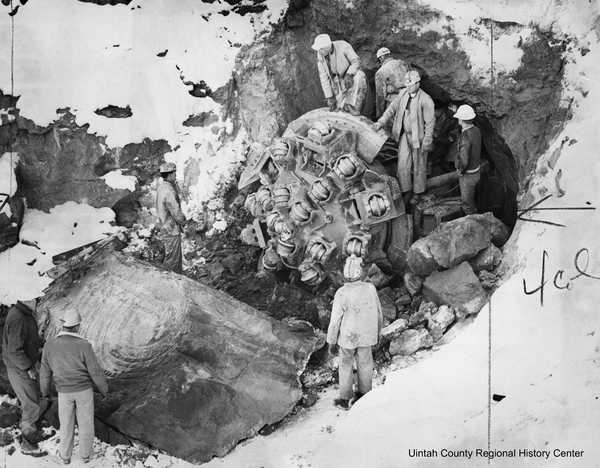Dublin Core
Title
Description
The Central Utah Project – or CUP – is the largest water infrastructure scheme in the history of Utah. Designed to pipe water from the Uinta Basin across the mountains to the Wasatch Front, construction began in the mid-twentieth century with a flood of federal money. The plans were so ambitious that the project was split into four units. Two additional units were later negotiated as compensation to the Ute Tribe for use of their water. Yet by the 1990s, mounting environmental, budget, and political concerns jeopardized the entire project.
Despite claims by the US Bureau of Reclamation that it could “build a dam anywhere,” carving a plumbing system into the mountains was unpredictable. Construction quickly ran over budget and into obstacles. For example, construction on the eight-mile Stillwater Tunnel faced years of delay despite a custom-designed tunnel-boring machine. Another tunnel in Diamond Fork Canyon hit a dangerous pocket of sulfur, causing the crew to just abandon equipment worth millions. Meanwhile, the Upper Stillwater Dam leaked and exceeded projected costs by 77%.
In 1970, the creation of the federal Environmental Protection Agency introduced more stringent regulations. And the environmental impacts of this vast network of dams, aqueducts, and pumping stations were significant. Environmentalists protested and sued, while sport anglers demanded that streams and fish remain healthy. At the same time, the 1970s was a decade of inflation and federal deficits, so extravagant reclamation projects drew attention from national politicians. In 1977, President Jimmy Carter placed the CUP on his “hit list.” As the purse strings tightened, planners pushed the units promised to the Ute Tribe to the backburner.
By the 1990s – to survive – the CUP needed to satisfy deficit hawks in Washington, environmentalists, and the Ute Tribe. The Central Utah Project Completion Act of 1992 nearly managed this feat. The federal government handed responsibility for the project’s completion over to a state-based agency but retained control over the budget. The project would restore the Provo River, pleasing anglers and environmentalists. But the CUP never made good on its promises to the Ute Tribe. A frustrated Ute Business Committee withdrew tribal support from the project in 1999 and continues to seek recompense for the units never built. The compromises meant that the CUP survived, although in a reduced form. And while its completion is scheduled for 2026, time will tell whether the CUP will meet its final deadline.
Creator
Source
_______________
See Craig W. Fuller, Robert E. Parson, and F. Ross Peterson, eds., Water, Agriculture, and Urban Growth: A History of the Central Utah Project (Salt Lake City: Utah State Historical Society, 2016); Craig W. Fuller, “Central Utah Project,” in Utah History Encyclopedia (Salt Lake City: Utah State Historical Society, 1994); US Department of the Interior, “Bonneville Unit.”

